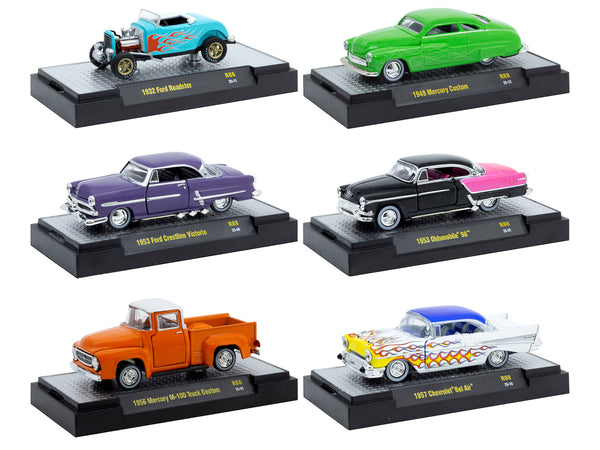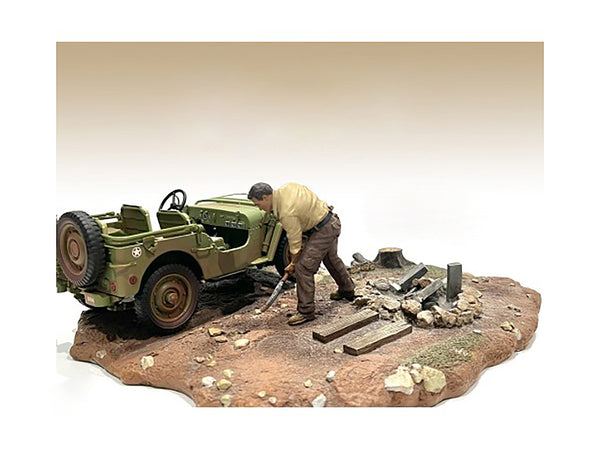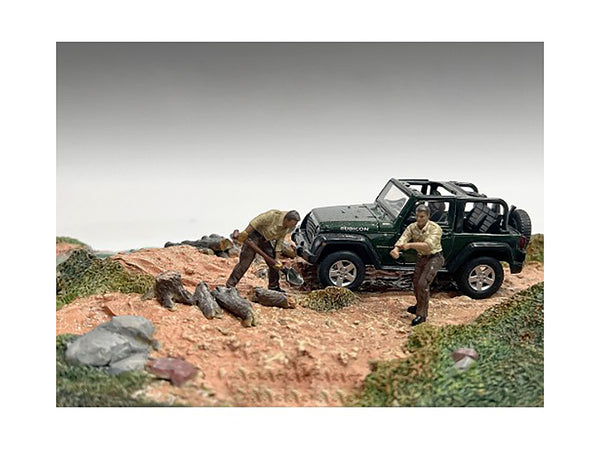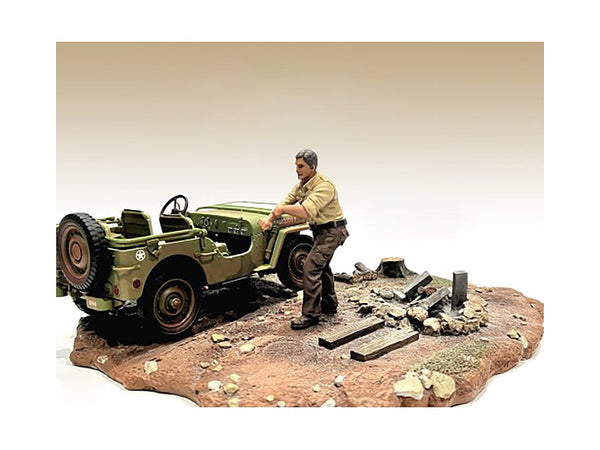
Building Your Dream Ride: A Guide to Choosing the Perfect Kit Car Kit
Related Products
Share
Building Your Dream Ride: A Guide to Choosing the Perfect Kit Car Kit
Are you tired of driving the same old cookie-cutter cars? If you've got a passion for unique vehicles and want to unleash your inner car enthusiast, then building your dream ride from a kit car kit might just be the perfect solution for you. In this comprehensive guide, we will explore the exciting world of kit cars and help you navigate the process of selecting the right kit for your ambitions.
From the sleek lines of a classic sports car to the rugged design of an off-road beast, kit cars offer endless possibilities for customization. But with so many options available, it can be overwhelming to know where to start. That's why we've compiled this guide to demystify the process and provide you with expert advice on choosing the perfect kit car.
Whether you're a seasoned car enthusiast or a complete beginner, this guide will walk you through everything you need to consider, from assessing your skill level to understanding the legal requirements. So buckle up and get ready to embark on an exhilarating journey as we help you realize your dream of building your very own unique, high-performance ride.
Brand Voice: Informative and Engaging
Are you tired of driving the same old cookie-cutter cars? Do you yearn for a vehicle that reflects your unique style and personality? Building a kit car might be the perfect solution for you. Kit cars offer a range of benefits that
go beyond just driving a one-of-a-kind vehicle.
Firstly, building a kit car allows you to unleash your creativity and design a ride that truly stands out from the crowd. With a kit car, you have the opportunity to customize every aspect of the vehicle, from the exterior design to the interior features. Whether you want a sleek sports car or a rugged off-road beast, the possibilities are endless.
Secondly, building a kit car can be a highly rewarding and fulfilling experience. It allows you to get hands-on with the construction process and truly understand the mechanics of your vehicle. You'll gain valuable knowledge and skills along the way, which can be applied to future car projects or even general maintenance of your daily driver.
Lastly, kit cars often offer significant cost savings compared to buying a brand new vehicle. While the initial investment in a kit car kit may seem substantial, when compared to the price of a factory-built car, it becomes clear that building your own car can be a more affordable option. Additionally, you have control over the quality of components used, ensuring that your car meets your standards without breaking the bank.
Before diving into the world of kit cars, it's essential to consider a few factors that will help guide your decision-making process. Choosing the right kit car kit involves more than just picking a design that catches your eye. Here are some key factors to keep in mind:
Researching Available Kit Car Options
The first step in choosing the perfect kit car kit is conducting thorough research. Take the time to explore the various kit car options available in the market. Consider factors such as the design, performance, and reputation of different kit car manufacturers. Look for reviews and testimonials from other kit car builders to get an idea of the overall experience and satisfaction level.
Assessing Your Skill Level and Available Resources
Building a kit car requires a certain level of mechanical expertise and knowledge. Assess your own skill level and determine if you have the necessary tools and resources to complete the project. If you're a beginner, it may be wise to start with a simpler kit that doesn't require advanced skills or specialized equipment. On the other hand, if you're an experienced car enthusiast, you may be up for a more challenging build.
Setting a Budget for Your Kit Car Project
Building a kit car can range in cost depending on the complexity of the design and the quality of components used. It's essential to set a realistic budget for your project, taking into account not only the cost of the kit itself but also additional expenses such as tools, paint, and any modifications you may want to make. Research the prices of different kits and components to get an idea of the total investment required.
Evaluating the Reputation of Kit Car Manufacturers
When choosing a kit car, it's crucial to consider the reputation of the manufacturer. Look for manufacturers with a track record of producing high-quality kits and providing excellent customer support. Read reviews and seek recommendations from other kit car builders to ensure that you're investing in a reputable brand that delivers on its promises.
Once you've chosen a kit car, it's time to select the components that will bring your dream ride to life. This process involves careful consideration and research to ensure that you're getting the best possible parts for your build. Here are a few tips to help you make the right choices:
- Research the compatibility of different components with your chosen kit. Ensure that the parts you select are designed to work seamlessly together.
- Consider the performance aspects of your build. If you're aiming for a high-performance vehicle, opt for components that enhance speed, handling, and braking capabilities.
- Take aesthetics into account. Choose components that align with your desired look and feel of the finished car. Whether it's chrome accents, carbon fiber details, or custom paint options, the choice is yours.
- Don't overlook the importance of safety. Invest in quality brakes, suspension, and other safety-related components to ensure a reliable and secure driving experience.
Now that you've done your research and selected the perfect kit and components, it's time to start building your dream ride. Here's a step-by-step guide to help you navigate the construction process:
1. Prepare your workspace: Set up a clean and organized workspace with all the necessary tools and equipment. Ensure that you have ample space to work comfortably and safely.
2. Familiarize yourself with the kit: Carefully read through the instructions provided by the manufacturer. Familiarize yourself with the different components and their respective assembly processes.
3. Start with the chassis: Begin by assembling the chassis according to the manufacturer's instructions. Follow the step-by-step process, ensuring that all connections are secure and aligned correctly.
4. Install the drivetrain: Once the chassis is complete, move on to installing the drivetrain components such as the engine, transmission, and exhaust system. Take your time to ensure that everything is properly connected and aligned.
5. Build the body: Next, assemble the body of your kit car. This may involve fitting panels, attaching doors, and installing windows. Pay attention to the manufacturer's instructions to ensure a proper fit and finish.
6. Wiring and electrical systems: Connect the wiring and electrical systems of your kit car, including lights, gauges, and other components. Take extra care to follow proper wiring practices and ensure electrical safety.
7. Interior and finishing touches: Complete the interior of your kit car by installing seats, carpeting, and other interior components. Add any finishing touches such as trim, badges, or custom features to personalize your ride.
8. Testing and fine-tuning: Before hitting the road, thoroughly test your kit car to ensure that all systems are functioning correctly. Take it for a few short drives to identify any issues or areas that may require fine-tuning.
Building your dream ride from a kit car kit is a thrilling and rewarding experience. It allows you to create a unique vehicle that reflects your individual style and preferences. By considering factors such as available options, skill level, budget, and reputable manufacturers, you can make an informed choice when selecting a kit car kit.
Remember to meticulously research and select the right components for your build, ensuring compatibility and performance. Finally, follow a step-by-step approach when building your kit car, taking the time to do it right and paying attention to detail.
So, are you ready to embark on this exhilarating journey of building your very own unique, high-performance ride? Start researching, planning, and get ready to turn your dream into a reality. The road to your perfect kit car awaits!
When it comes to building your dream ride, setting a realistic budget is essential. Kit cars can vary significantly in price, depending on factors such as the complexity of the build, the quality of the components, and the reputation of the manufacturer. Before diving into the world of kit cars, take some time to evaluate your financial situation and determine how much you're willing to invest in your project.
It's important to keep in mind that the initial cost of the kit is just the beginning. You'll also need to factor in additional expenses such as tools, paint, and various accessories. Research the average costs associated with kit car builds of similar models to get a better idea of what you'll be looking at. By setting a budget upfront, you'll be able to make informed decisions throughout the process and avoid any unpleasant financial surprises.
Choosing the right kit car manufacturer is crucial to the success of your project. With so many manufacturers to choose from, it can be challenging to determine which ones are reputable and produce high-quality kits. Start by researching online forums, social media groups, and car enthusiast communities to gather feedback and reviews from other builders.
Pay close attention to factors such as the manufacturer's track record, customer support, and the overall satisfaction of their customers. Look for manufacturers that have been in the business for a while and have a solid reputation for producing reliable and well-engineered kits. Don't be afraid to reach out to other builders for their opinions and recommendations. Gathering as much information as possible will help you make an informed decision and ensure that you're investing in a kit from a trusted source.
One of the most exciting aspects of building a kit car is the ability to customize it to your exact specifications. From the engine to the suspension, every component can be tailored to fit your desired performance and aesthetic goals. However, with so many options available, it's essential to do your research and select the right components for your kit car.
Start by determining the purpose of your build. Are you looking for a high-performance track car or a comfortable cruiser for long drives? This will help you narrow down your options and make more informed decisions. Consider factors such as engine power, transmission type, braking system, and suspension setup. It's also important to ensure that the components you choose are compatible with the kit you've selected.





